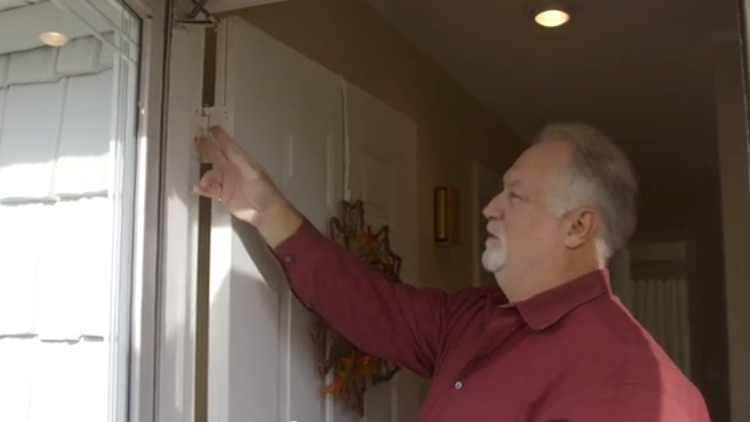Sponsored Content Brought To You By Alure Home Improvements
Just imagine for a second how many times a day you open and shut the doors in your house. This important part of your living arrangement, like all things, is subject to wear and tear over time. For an exterior front door, it’s undergoing even more pressures due to shifts in temperature and weather as one season runs into another. It’s to be expected that it will warp and swell. There’s another factor too, as Doug Cornwell, chief operating officer of Alure Home Improvements, explains.
“The entrance door is heavy!” Cornwell says in a recent installment of “Alure Home Improvements’ 60 Second Fix” titled “How To Adjust Your Front Door In 60 Seconds.” It’s got to stand up to the weather and the unwanted, so it’s made stronger and it’s insulated.
“Over time they will start to weigh down and come out of level,” he warns. An uneven door puts pressure on the hinges, causing them to weaken and become misshapen.
If you don’t address that spacing problem, at a certain point the door will start to creak or squeak, and, in the worst case scenario, actually get stuck or fail to shut properly. That could put you in a real jam.
Fortunately, Cornwell knows what to do, and here in this new “60 Second Fix Video,” he spells out the simple steps you can take to fix this all-too common household problem.
“The easiest way to check is if you first take a look at the spacing above the door,” Cornwell advises. If the space between the top of the door and the door jamb is narrower at one end than the other, it has to be fixed. If you examine the vertical gap on the side of the door where the latch is, you’ll probably see a similarly uneven space. According to Cornwell, the most common cause of that unevenness is that the top hinge has been pulled slightly out of the door jamb due to the weight of the door.
“This tells us that the door is out of whack,” says Cornwell.
In this case, Cornwell intends to readjust the door’s top hinge because he’s figured out that it has pulled slightly away from the door jamb. He unscrews the top screw in the hinge and realizes that it’s too short to support the door’s weight any more, and it must be replaced with a longer screw that will anchor the hinge not only to the door jamb but to the wooden frame behind the jamb.
He doesn’t need to drill a different hole for the hinge. He just inserts a longer screw into the same hole, and with the aid of hand-held power screw-driver, he quickly tightens the new screw until he can feel it dig firmly into the two-by-four frame of the house.
Click here to learn more about Alure Home Improvements
To test it out, Cornwell goes back inside the house and closes the front door so he can inspect the spacing.
“If you take a look, you’ll see that the space across the top is now more even,” he says. “That’s important on an exterior door because that also stops the air infiltration.”
And we all know what that means: a higher energy bill!
So, the next time you notice that your front door is unevenly spaced in the door jamb, it may be that the top hinge has slipped out of line. Thanks to Doug Cornwell at Alure Home Improvements, you now know that simplest solution could be just tightening the top hinge by replacing a short screw with a longer one that will anchor deeper into the door frame.



































